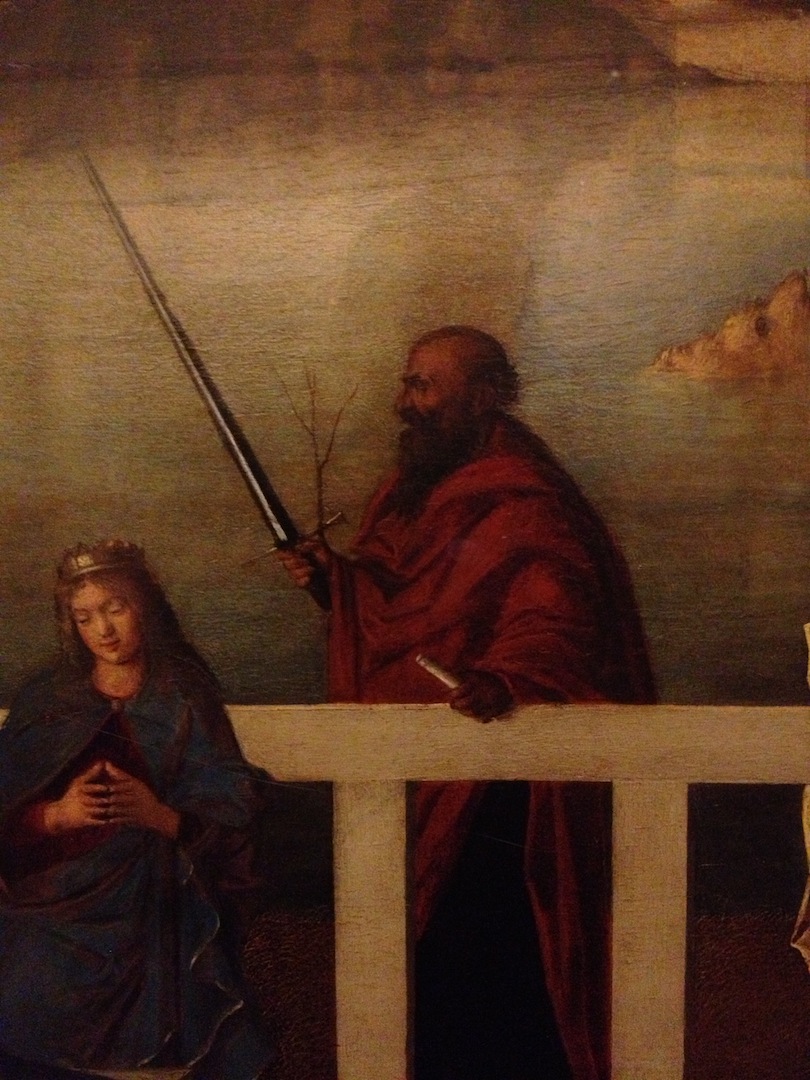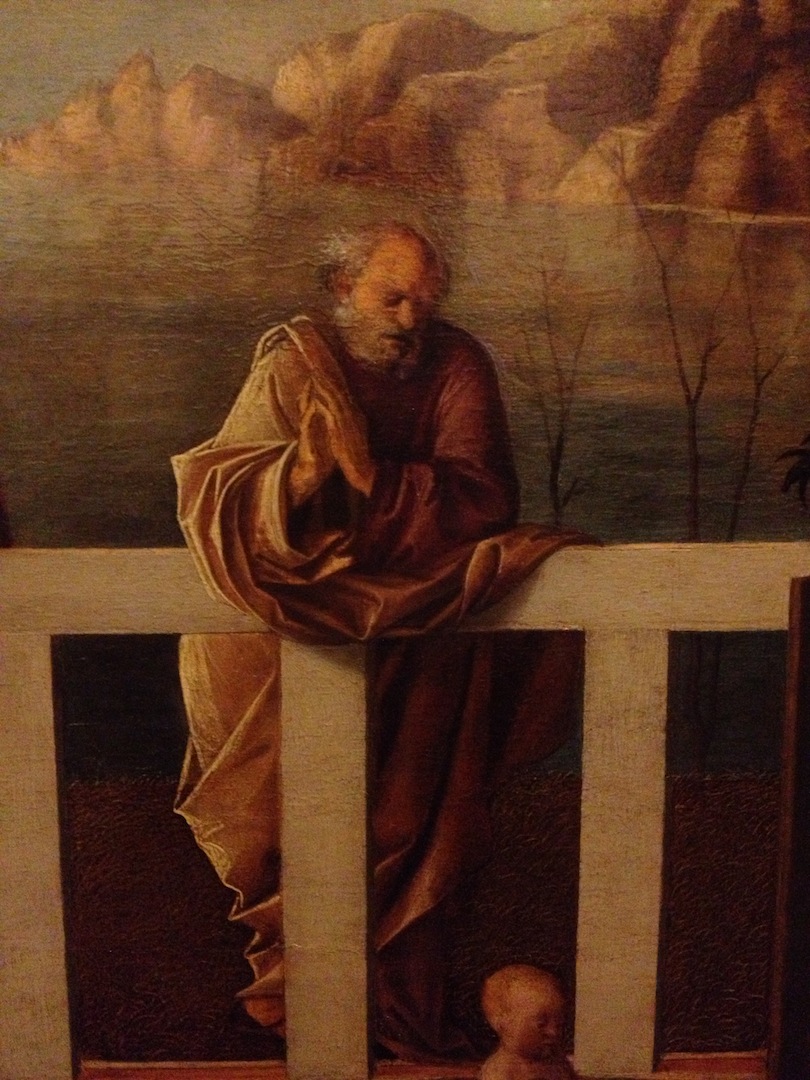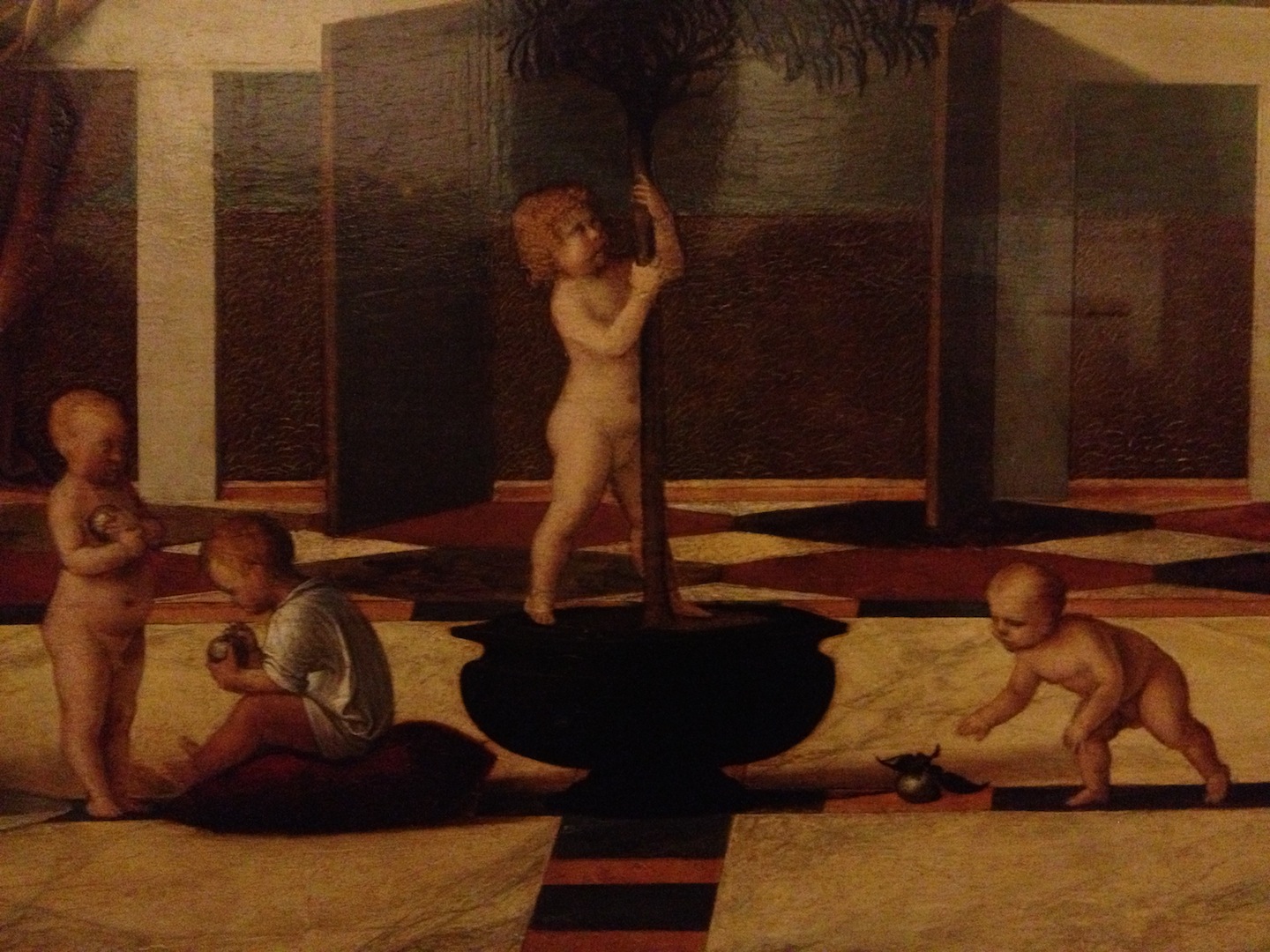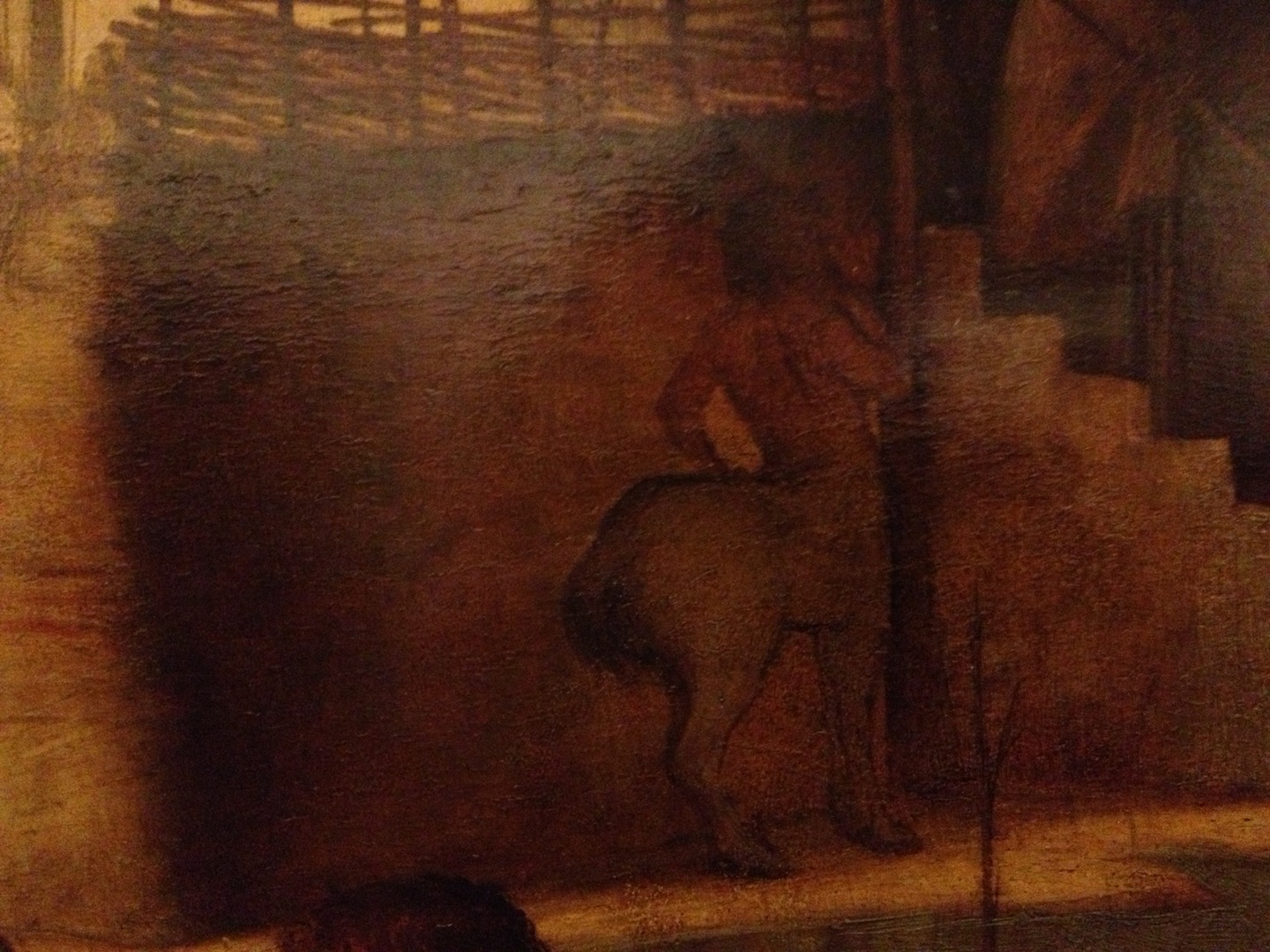The Sacred Allegory of Giovanni Bellini
Giovanni Bellini
Sacred Allegory
1490-99
Oil on panel
Uffizi
Giovanni Bellini's Sacred Allegory startled me when I happened upon it at the Uffizi. It is painted in a simple, unassuming manner. But the obvious occult significance of the scene is somehow shocking in its brazenness. While it is obviously symbolic, what it symbolizes is subject to debate. From Wikipedia:
The scene is set on a wide terrace with a polychrome marble pavement, in perspective, separated from a lake shore by a parapet. On the left Mary is enthroned, under a baldachin whose support is in cornucopia shape, a symbol of her fertility. The baldachin has four steps, and on its side is a frieze with scenes of the myth of Marsyas, interpreted as a parallel with Jesus' Passion. Near to Mary are two unidentified female figures, which could represent two saints or two virtues. One of them looks to be floating in the air, although the effect could stem from a loss of color near her legs and feet.
In the middle of the scene are four children playing with a small tree and its silver fruits, perhaps a symbol of the knowledge tree, a symbol of life and wisdom. On the right are Job and St. Sebastian. Outside the parapet, are St. Joseph (or St. Peter) and St. Paul, the latter with his attribute of a sword. He is advancing to the left, where a man with a turban perhaps symbolizes an infidel.
In the background, beyond a large lake, is a landscape with rocky spurs with men and animals. On the shores are a shepherd in a grotto, and a centaur.
Interpretations of meaning can go in any direction, but I think the overt comparison of Jesus with Marsyas is anti-Christian because Marsyas' punishment was justified according to the myth he was part of. If Jesus is like Marsyas, who was punished by Athena for picking up her aulos (pan pipes) -- after she had tossed them away, then his death was less a sacrifice and more a punishment for challenging a higher authority, perhaps Lucifer / Zeus / Jupiter.
According to an editor on the Wikipedia page
What is sure is that the painting was made for a refined élite, whose education allowed them to understand any subtle detail included in it.
To further extrapolate: A "refined elite" could themselves be in opposition to the authority of the church, as were the Knights Templar, and secretly be desirous of art celebrating such opposition. Nothing could be more heretical and blasphemous than declaring the Crucifixion justified for reasons other than redemption.








